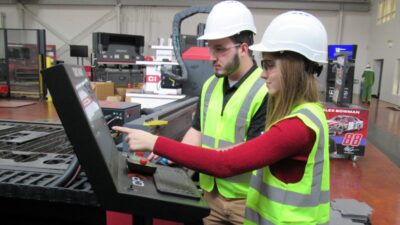T he performance-based standards ANSI/ISA S84.01, IEC 61508, and IEC d61511 mandate the use of risk assessment techniques to meet the established target risk level(s) for a process. Different risk assessment techniques that are quantitative, qualitative or semi-quantitative in approach are used to evaluate the process risk and identify the safety systems needed to meet the target risk levels. Such an analysis of process safety requirements is called Safety Integrity Level (SIL) analysis.
Semi-quantitative risk assessment techniques are used to derive most of the benefits of the quantitative techniques, and to minimize the resources necessary for a rigorous quantification of risk. In this approach, the quantification of risk parameters, i.e., losses and the likelihood associated with hazardous events are done in terms of order of magnitude rather than precise estimations. Layer of Protection Analysis (LOPA), a semi-quantitative risk assessment technique, provides a simple and effective methodology to perform SIL analysis for a process. LOPA is based on the safety protection layer concept.
A typical way of showing protection layers for a process are perceived at different levels (see Protection layer diagram).
The first (innermost) level of protection is built-in and is the inherent nature of the process; the final (outermost) level of protection is the emergency response action from the community. The prevention or mitigation of hazardous events depends on the availability and successful performance of various safety protection layers.
In case of failure of one protection layer, the protection layer at the next level will still be available to take the process to a safety state. As the number of protection layers and their reliabilities increase, the safety of the process increases.
LOPA characterizes the functioning of the available protection layers and their order of functioning during unsafe situations. It helps to understand the sequence of events that have to occur between the cause and a specified hazardous event.
In the first step of LOPA, all credible hazardous events are identified from a Process Hazard Analysis (PHA). Based on the order of magnitude severity of associated losses, a likelihood target is established for each hazardous event. Likelihood of the hazardous event is estimated by identifying the events that need to occur and their likelihood these events will actually happen. Such events consist of success or failure of the protection layers shown above. Identification of the events starts with the identification of basic cause and supporting conditions.
Further, the progression of each scenario, i.e., from cause to the hazardous event, is analyzed by identifying the events that fall on the scenario path. Thus, LOPA is basically an event tree analysis, but the analysis covers only a single scenario path of interest. Since the scope of the SIL analysis is to match the estimated likelihood of specific hazardous events with specified target levels, identification of other scenario paths (that may emanate from the same causes, but result in different hazardous events) is generally not done in LOPA.
Once the likelihood of the hazardous event is estimated it is compared with the likelihood target to identify the need and the nature of the additional safety layer(s) to meet the target risk levels.
Thus, LOPA, a semi-quantitative risk assessment technique, makes it feasible to comply with performance-based standards such as ISA S84.01 and IEC 61508, effectively and with limited resources.
Kumar Bhimavarapu is a project manager for Factory Mutual Research. He has 16 years of chemical process industry experience. He has contributed to the development of safety standards for the hydrocarbon industry and has investigated a number of fires and accidents, assisted in preparation of disaster management planning, and developed methodologies for the evaluation of safety performance of process units. Currently he is applying his experience to develop and apply risk-engineering methodologies to a variety of clients. He holds master’s degrees from Indian Institute of Technology, Madras, India and Northeastern University in Boston, Mass. He is an associate member of the American Institute of Chemical Engineers and an accredited safety auditor certified by the British Safety Council, UK.
Additional reading
Bhimavarapu, K., and Stavrianidis, P., Safety Integrity Level Analysis for Processes-Methodologies and Issues , AIChE Spring Meeting, Houston, 1999 (accepted for publication in Process Safety Progress, AIChE)
Stavrianidis, P., and Bhimavarapu, K., Safety Instrumented Functions and Safety Integrity Levels (SIL) , ISA Transactions , 1999.
Back issues of Factory Mutual’s Process and Safety Systems Updates are available at: www.fmglobal.com/education_resources/online_catalog/prssu.html
Forthcoming material
A CCPS (Center for Chemical Process Safety of the American Institute of Chemical Engineers) technical committee is currently writing a ‘Concept Series’ book on ‘Layer of Protection Analysis (LOPA).’
Contact information
American Institute of Chemical EngineersCenter for Chemical Process Safety345 East 47th Street, New York, N.Y. 10017(212) 591-7407
Factory Mutual Research1151 Boston-Providence Turnpike, R229, P.O. Box 9102, Norwood, MA 02062(781) 255-4875
Instrument Society of America – ISA67 Alexander Drive, Research Triangle Park, NC 27709(919) 549-8411
Comments? E-mail [email protected]



